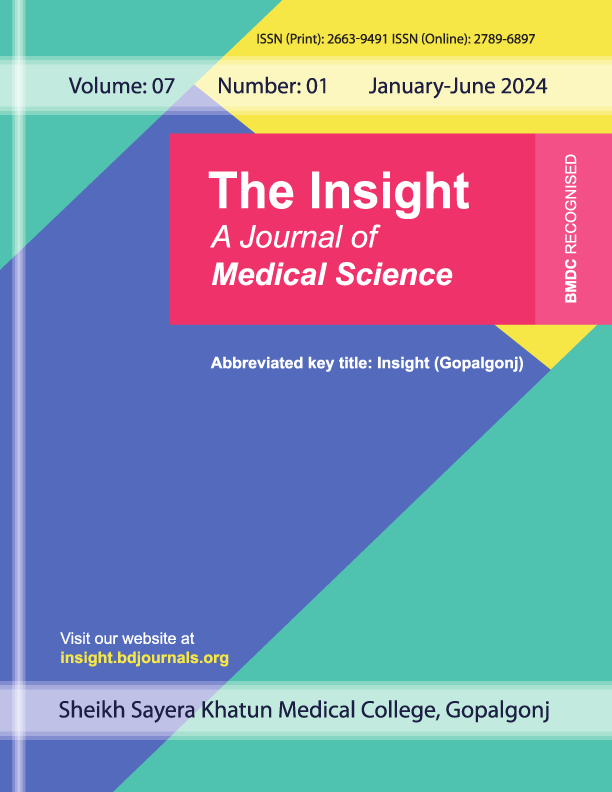Effectiveness and Outcome of Mifepristone and Misoprostol for Early Abortion — A Single-Centre Study
Publiée 2024-11-15
Mots-clés
- Mifepristone,
- Misoprostol,
- Gestational Ages,
- Abortion
(c) Copyright The Insight 2024

Ce travail est disponible sous la licence Creative Commons Attribution 4.0 International .
Comment citer
Résumé
Introduction: About 56 million induced abortions occurred each year worldwide and about 1.2 million induced abortions occurred each year in Bangladesh. Maternal mortality in Bangladesh is 1.76 /1000 live birth, one fourth of these deaths are due to complication of induced abortion. Objective: To assess the effectiveness, outcome, and safety of use of combination of mifepristone and misoprostol in inducing early abortion in Gynae OPD of Dhaka National Medical Institute and hospital. Methods & Materials: This was a prospective cross sectional study of 70 outpatients seeking menstrual regulation ( by MRM) within nine weeks ( 63 days ) of a missed period was conducted at a Gynae OPD of Dhaka National Medical Institute and hospital from July 2023 to December 2023. Results: This study analyzed the demographic and clinical outcomes of first-trimester medical abortions in 70 participants, primarily young adults aged 19 to 29 (97.14%). Most were multigravid, with 41.43% in their second pregnancy. Expulsion typically occurred within 4 hours of treatment, with the highest success rates observed at earlier gestational stages—96.67% for pregnancies between 4 and 6 weeks, and 95.24% for 6 to 8 weeks. Side effects included per vaginal bleeding of variable amount (100%), uterine cramps (74.28%), nausea (35.71%), and fever (30%), with no cases of uterine rupture. Only three cases required surgical intervention due to failed medical abortions. Conclusion: This study demonstrates the high effectiveness and safety of medical abortions using mifepristone and misoprostol in the first trimester, particularly at earlier gestational stages.



